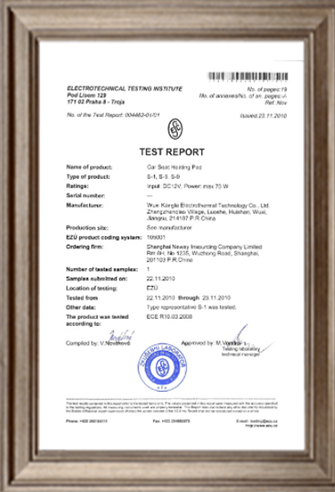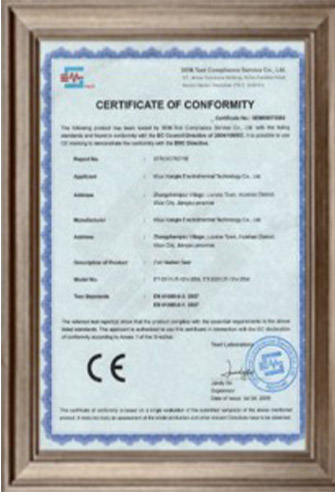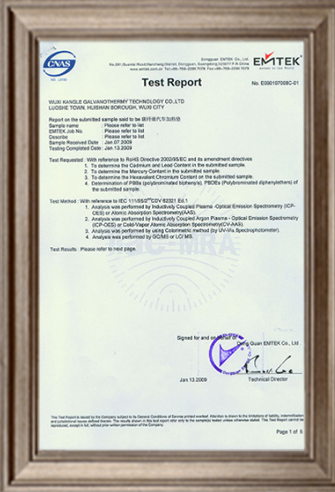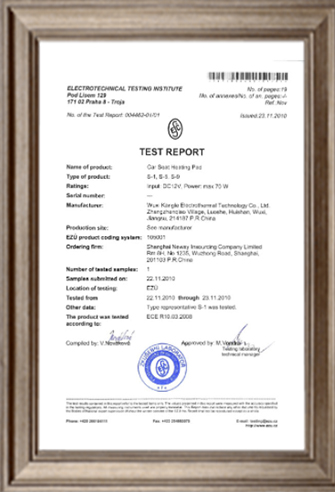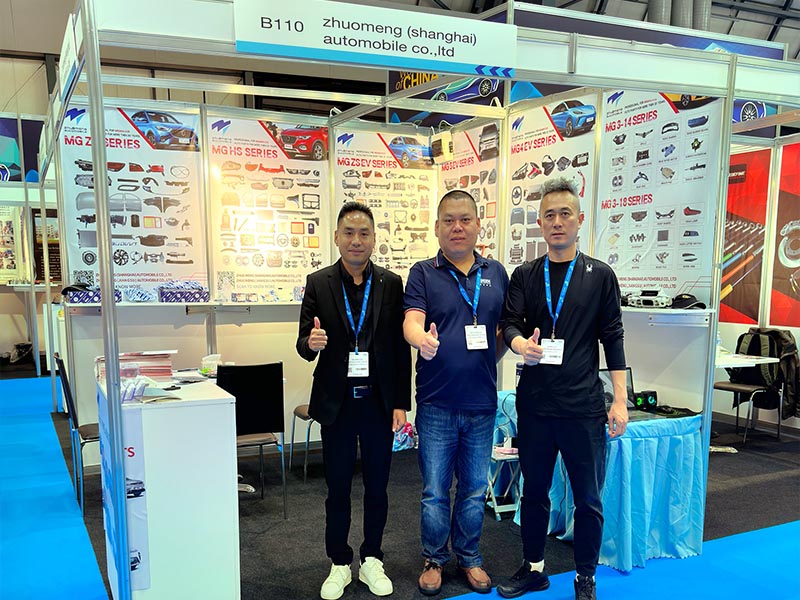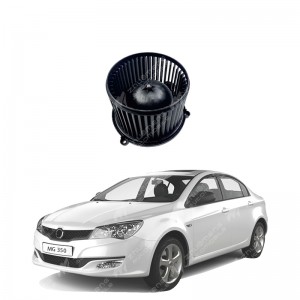Automobile air conditioning blower principle
Abstract: The automobile air conditioning system is a device to realize the cooling, heating, air exchange and air purification of the air in the carriage. It can provide a comfortable driving environment for passengers, reduce the fatigue intensity of drivers, and improve the safety of driving. Air conditioning equipment has become one of the indicators to measure whether the car is complete. Automobile air conditioning system is composed of compressor, air conditioning blower, condenser, liquid storage dryer, expansion valve, evaporator and blower, etc. This paper mainly introduces the principle of automobile air conditioning blower.
With global warming and the improvement of people's requirements for the driving environment, more and more cars are equipped with air conditioning systems. According to statistics, in 2000, 78% of the cars sold in the United States and Canada have been equipped with air conditioning, and it is now conservatively estimated that at least 90% of the cars are air-conditioned, in addition to bringing comfortable driving environment to people. As a car user, the reader should understand its principle, so that emergency situations can be solved more effectively and quickly.
1. Working principle of automotive refrigeration system
The working principle of automobile air conditioning refrigeration system
1, the working principle of automobile air conditioning refrigeration system
The cycle of automobile air conditioning refrigeration system consists of four processes: compression, heat release, throttling and heat absorption.
(1) Compression process: the compressor inhales the low temperature and low pressure refrigerant gas at the outlet of the evaporator, compresses it into high temperature and high pressure gas, and then sends it to the condenser. The main function of this process is to compress and pressurize the gas so that it is easy to liquefy. During the compression process, the state of the refrigerant does not change, and the temperature and pressure continue to rise, forming superheated gas.
(2) Heat release process: high-temperature and high-pressure superheated refrigerant gas enters the condenser (radiator) for heat exchange with the atmosphere. Due to the reduction of pressure and temperature, the refrigerant gas condenses into a liquid and releases a large amount of heat. The function of this process is to expel heat and condense. The condensation process is characterized by a change in the state of the refrigerant, that is, under the condition of constant pressure and temperature, it gradually changes from gas to liquid. The refrigerant liquid after condensation is high pressure and high temperature liquid. The refrigerant liquid is supercooled, and the greater the degree of supercooling, the greater the ability of evaporation to absorb heat during the evaporation process, and the better the refrigeration effect, that is, the corresponding increase in cold production.
(3) throttling process: high pressure and high temperature refrigerant liquid is throttled through the expansion valve to reduce the temperature and pressure, and the expansion device is eliminated in a fog (small droplets). The role of the process is to cool the refrigerant and reduce the pressure, from the high temperature and high pressure liquid to the low temperature pressure liquid, in order to facilitate the heat absorption, control the refrigeration capacity and maintain the normal operation of the refrigeration system.
4) Heat absorption process: the mist refrigerant liquid after cooling and depressing by the expansion valve enters the evaporator, so the boiling point of the refrigerant is much lower than the temperature inside the evaporator, so the refrigerant liquid evaporates in the evaporator and boils into gas. In the evaporation process to absorb a lot of heat around, reduce the temperature inside the car. Then the low temperature and low pressure refrigerant gas flows out of the evaporator and waits for the compressor to inhale again. The endothermic process is characterized by the state of the refrigerant changing from liquid to gaseous, and the pressure is unchanged at this time, that is, the change of this state is carried out during the constant pressure process.
2, the automotive air conditioning refrigeration system is generally composed of compressors, condensers, liquid storage dryers, expansion valves, evaporators and blowers. As shown in Figure 1, the components are connected by copper (or aluminum) and high-pressure rubber tubes to form a closed system. When the cold system works, the different states of the refrigeration memory circulate in this closed system, and each cycle has four basic processes:
(1) Compression process: the compressor inhales the refrigerant gas at the outlet of the evaporator at low temperature and pressure, and compresses it into a high-temperature and high-pressure gas removal compressor.
(2) Heat release process: the high-temperature and high-pressure superheated refrigerant gas enters the condenser, and the refrigerant gas is condensed into a liquid due to the reduction of pressure and temperature, and a lot of heat is released.
(3) throttling process: After the refrigerant liquid with high temperature and pressure passes through the expansion device, the volume becomes larger, the pressure and temperature drop sharply, and the expansion device is eliminated in a fog (small droplets).
(4) Heat absorption process: the mist refrigerant liquid enters the evaporator, so the boiling point of the refrigerant is much lower than the temperature inside the evaporator, so the refrigerant liquid evaporates into a gas. During the evaporation process, a large amount of heat is absorbed around, and then the low temperature and low pressure refrigerant steam enters the compressor.
2 Working principle of blower
Usually, the blower on the car is a centrifugal blower, and the working principle of the centrifugal blower is similar to that of the centrifugal fan, except that the compression process of the air is usually carried out under the action of centrifugal force through several working impellers (or several stages). The blower has a high-speed rotating rotor, and the blade on the rotor drives the air to move at high speed. The centrifugal force makes the air flow to the fan outlet along the involute line in the involute shape of the casing, and the high-speed air flow has a certain wind pressure. The new air is replenished through the center of the housing.
Theoretically speaking, the pressure-flow characteristic curve of the centrifugal blower is a straight line, but due to the friction resistance and other losses inside the fan, the actual pressure and flow characteristic curve gently decreases with the increase of the flow rate, and the corresponding power-flow curve of the centrifugal fan rises with the increase of the flow rate. When the fan is running at constant speed, the working point of the fan will move along the pressure-flow characteristic curve. The operating condition of the fan during operation depends not only on its own performance, but also on the characteristics of the system. When the pipe network resistance increases, the pipe performance curve will become steeper. The basic principle of fan regulation is to obtain the required working conditions by changing the performance curve of the fan itself or the characteristic curve of the external pipe network. Therefore, some intelligent systems are installed on the car to help the car operate normally when driving at low speed, medium speed and high speed.
Blower control principle
2.1 Automatic control
When the "automatic" switch of the air conditioning control board is pressed, the air conditioning computer automatically adjusts the speed of the blower according to the required output air temperature
When the air flow direction is selected in the "face" or "dual flow direction", and the blower is in a low speed state, the blower speed will change according to the solar strength within the limit range.
(1) Operation of low speed control
During low speed control, the air-conditioning computer disconnects the base voltage of the power triode, and the power triode and ultra-high speed relay are also disconnected. The current flows from the blower motor to the blower resistance, and then takes the iron to make the motor run at a low speed
Air conditioning computer has the following 7 parts :1 battery, 2 ignition switch, 3 heater relay, blower motor, 5 blower resistor, 6 power transistor, 7 temperature fuse wire, 8 air conditioning computer, 9 high speed relay.
(2) Operation of medium speed control
During medium speed control, the power triode assembles a temperature fuse, which protects the triode from overheating damage. The air conditioning computer changes the base current of the power triode by changing the blower drive signal to achieve the purpose of wireless control of the blower motor speed.
3) Operation of high-speed control
During high-speed control, the air conditioning computer disconnects the base voltage of the power triode, its connector No. 40 tie iron, and the high-speed relay is switched on, and the current from the blower motor flows through the high-speed relay, and then to the tie iron, making the motor rotate at high speed.
2.2 Preheating
In the automatic control state, a temperature sensor fixed in the lower part of the heater core detects the temperature of the coolant and performs preheating control. When the coolant temperature is below 40 ° C and the automatic switch is on, the air conditioning computer closes the blower to prevent cold air from being discharged. On the contrary, when the coolant temperature is above 40 ° C, the air conditioning computer starts the blower and makes it rotate at a low speed. From then on, the blower speed is automatically controlled according to the calculated air flow and the required output air temperature.
The preheating control described above exists only when the air flow is selected in the "bottom" or "dual flow" direction.
2.3 Delayed air flow control (only for cooling)
The delayed airflow control is based on the temperature inside the cooler detected by the evaporator temperature sensor. delay
The airflow control can prevent the accidental discharge of hot air from the air conditioner. This delay control operation is performed only once when the engine is started and the following conditions are met :1 compressor operation; Turn 2 blower control in the "automatic" state (automatic switch on); 3 Air flow control in the "face" state; Adjust to "Face" through the face switch, or set to "face" in the automatic control; 4 The temperature inside the cooler is higher than 30℃
The operation of delayed air flow control is as follows:
Even when all the above four conditions are met and the engine has been started, the blower motor cannot be started immediately. The blower motor has a difference of 4s, but the compressor must be switched on, and the engine must be started, and the refrigerant gas must be used to cool the evaporator. The 4s rear blower motor starts, operates at a low speed in the first 5s time, and gradually accelerates to a high speed in the last 6s time. This operation prevents the sudden discharge of hot air from the vent, which can cause agitation.
Closing remarks
The perfect car computer-controlled air conditioning system can automatically adjust the temperature, humidity, cleanliness, demeanor and ventilation of the air in the car, and make the air in the car flow at a certain speed and direction to provide a good driving environment for passengers, and ensure that passengers are in a comfortable air environment under various external climates and conditions. It can prevent the window glass from frosting, so that the driver can maintain a clear vision, and provide a basic guarantee for safe driving.
If you want to know more, keep reading the other articles on this site!
Please call us if you need such products.
Zhuo Meng Shanghai Auto Co., Ltd. is committed to selling MG&MAUXS auto parts welcome to buy.


